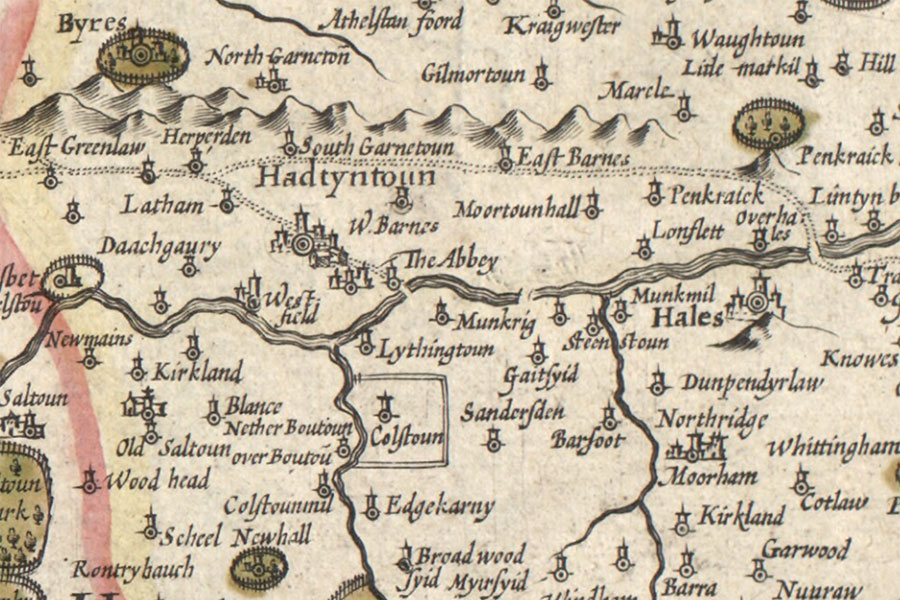

Hendrik Hondius, Amsterdam, 1630map image courtesy of NLS
Hailes Castle occupies a magnificent position on the south bank of the River Tyne and is thought to have been built in the 13th century, probably by one of the Earls of Dunbar and March.
George de Dunbar, 10th Earl of March was a powerful noble and a rival of the Douglas family. In 1395 his eldest daughter, Elizabeth, married David Stewart, Duke of Rothesay, son of Robert III and heir to the throne, however they married before the Papal mandate granting them permission arrived and two years later, under pressure from Archibald Douglas, 3rd Earl of Douglas, the marriage contract was cancelled.
Rather than remarry his wife of almost two years, the Duke of Rothesay was persuaded to marry Marjory Douglas, daughter of the Earl Douglas. As a consequence the Earl of March went to England in exile, joining the court of Henry IV. In 1398 the Earl of March, Sir Henry Percy, known as Hotspur, and Lord Thomas Talbot invaded Scotland with two thousand men, passing through the lands that formerly belonged to the Earl. They laid waste to the land and twice attacked Hailes Castle although it was successfully defended.
The castle was enlarged at the end of the 14th century by the Hepburn family. Further building work was carried out in 1507, and again after the castle was burned in 1532.
By the end of the 18th century the west tower was still complete, and the chapel still had its roof and was being used as a granary. The castle is now entirely roofless but the ruins are in good condition.
Alternative names for Hailes Castle
Haillis; Hales; Halis; Halys; Heels
Where is Hailes Castle?
Hailes Castle is in the parish of Prestonkirk and the county of East Lothian.
Grid reference: NT 57453 75792
Lat / long: 55.973226, -2.683287










